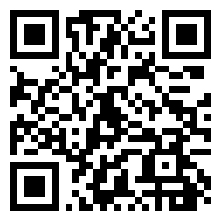A confident smile starts with healthy teeth alignment, but what happens if your bite isn’t quite right? A crossbite, one of the common orthodontic issues, can affect both the appearance and health of your smile.
If you’ve been wondering how to fix a crossbite or you’re researching the condition for your child, this guide will walk you through everything you need to know—including causes, treatment options, and what to expect during a crossbite correction.
Here is what you need to know.
What Is a Crossbite?
A crossbite occurs when the upper teeth fit inside the lower teeth rather than outside, as they should.
It can involve a single tooth or a group of teeth and can affect the front (anterior crossbite) or back (posterior crossbite) of the mouth. Understanding this condition is the first step toward correcting it, leading to better oral health and a more confident smile.
Causes of Crossbite
Crossbites don’t happen randomly. They happen for very specific reasons.
Here are several factors that can contribute to developing this misalignment:
- Genetics: Crossbites often run in families, meaning an inherited jaw structure can play a significant role.
- Childhood Habits: Prolonged thumb-sucking, pacifier use, or bottle-feeding can shift teeth out of place.
- Dental Issues: Crowded teeth, tooth eruption delays, or an imbalanced jaw structure can all result in a crossbite.
Understanding the root cause of a crossbite helps customize the right treatment plan.
Signs and Symptoms of a Crossbite
Crossbites aren’t always easy to spot without professional help, but some signs and symptoms to look out for include:
- Visible Misalignment: Upper teeth sit behind or inside the lower teeth.
- Jaw Discomfort: Pain or stiffness in the jaw, especially when biting or chewing.
- Uneven Wear: Excessive wear and tear on certain teeth caused by improper alignment.
- Aesthetic Concerns: The appearance of the misaligned teeth may affect confidence in smiling.
If you notice these signs in yourself or your child, it’s time to consult an orthodontist.
The Importance of Early Detection and Treatment
Addressing a crossbite early can prevent more significant issues down the road. If left untreated, a crossbite can cause:
- Jaw pain due to uneven pressure during chewing.
- Increased risk of tooth decay and gum disease from improper dental hygiene caused by overcrowding.
- Speech difficulties.
- Permanent changes to jaw structure.
Early detection—especially in children—makes it easier to correct the problem and avoid complications.
Treatment Options for Crossbite Correction
Modern orthodontic techniques offer several effective solutions on how to fix a crossbite. Your treatment plan will depend on factors like the severity of the crossbite, age, and overall oral health.
Here’s an overview of popular crossbite correction options:
1. Crossbite Braces
Traditional braces are one of the most effective ways to fix a crossbite. Braces use brackets and wires to gradually move teeth into the correct positions.
Over time, this treatment aligns both the upper and lower teeth for a balanced bite.
2. Clear Aligners (e.g., Invisalign)
For those seeking a more discreet option, clear aligners like Invisalign can treat mild to moderate crossbites.
These custom-fit trays are nearly invisible, removable, and ideal for adults and teenagers who want flexibility during treatment.
3. Palatal Expanders
Commonly used for children, palatal expanders widen the upper jaw to create more space for proper alignment.
This device is particularly effective for young patients whose jawbones are still developing.
4. Dental Veneers and Crowns
When crossbites involve only a few teeth, veneers or crowns can reshape and reposition them for an improved bite.
This option is best for mild cases.
5. Surgical Options
For severe crossbite correction in adults, corrective jaw surgery may be necessary to realign the upper and lower jaws.
Your orthodontist will recommend the best course of action based on your specific needs.
The Process of Correcting a Crossbite
Every patient is unique, and so are their treatment plans.
However, here’s a general breakdown of what to expect when correcting a crossbite:
1. Initial Consultation: During your first visit, the orthodontist will examine your teeth, take X-rays or scans to determine the severity of the crossbite and recommend a treatment plan.
2. Orthodontic Treatment: Based on the diagnosis, you will undergo one of the treatments mentioned above to correct your crossbite.
3. Retainer Wear: After completing your crossbite correction treatment, you’ll have to wear retainers to maintain the corrected position of your teeth and prevent relapse. This may involve wearing them full-time initially and then transitioning to only at night.
4. Regular Appointments: Throughout your treatment, you’ll have regular appointments with your orthodontist to monitor progress and make any necessary adjustments.
Post-Treatment Care
After the crossbite is fixed, wearing a retainer is crucial to maintain your new alignment. Retainers hold your teeth in place and prevent them from shifting back. Neglecting post-treatment care could compromise the results of your hard work.
Why Choose Gragg Orthodontics for Your Crossbite Correction?
At Gragg Orthodontics, we’re proud to deliver life-changing orthodontic care in Morganton and Lenoir, NC. Dr. Kimberly Gragg and her team bring over 20 years of expertise, applying cutting-edge technology and personalized care to give you the best possible outcome.
Whether you need braces, Invisalign, or advanced treatment options, we’re here to help create your dream smile.
Book Your Free Consultation Today!
Crossbites are treatable, and starting early is the key to success. At Gragg Orthodontics, we specialize in creating wide, full smiles that leave our patients brimming with confidence. Book a free consultation today to take the first step toward a healthier, more radiant smile.
Schedule your free consultation with Dr. Gragg and the team today. Give us a call at (828) 438-8998. Your dream smile is just around the corner!

